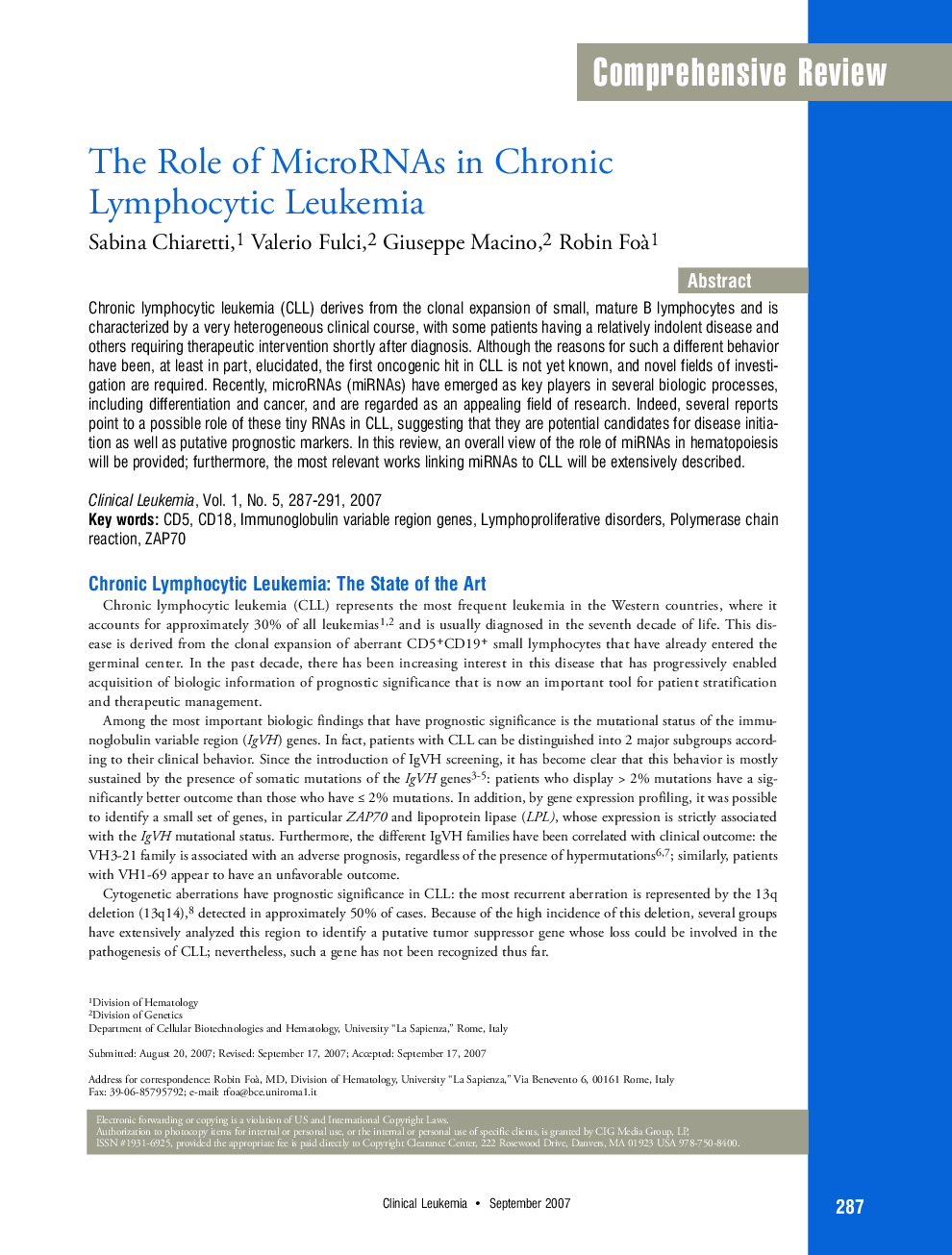| Article ID | Journal | Published Year | Pages | File Type |
|---|---|---|---|---|
| 3981064 | Clinical Leukemia | 2007 | 5 Pages |
Chronic lymphocytic leukemia (CLL) derives from the clonal expansion of small, mature B lymphocytes and is characterized by a very heterogeneous clinical course, with some patients having a relatively indolent disease and others requiring therapeutic intervention shortly after diagnosis. Although the reasons for such a different behavior have been, at least in part, elucidated, the first oncogenic hit in CLL is not yet known, and novel fields of investigation are required. Recently, microRNAs (miRNAs) have emerged as key players in several biologic processes, including differentiation and cancer, and are regarded as an appealing field of research. Indeed, several reports point to a possible role of these tiny RNAs in CLL, suggesting that they are potential candidates for disease initiation as well as putative prognostic markers. In this review, an overall view of the role of miRNAs in hematopoiesis will be provided; furthermore, the most relevant works linking miRNAs to CLL will be extensively described.
